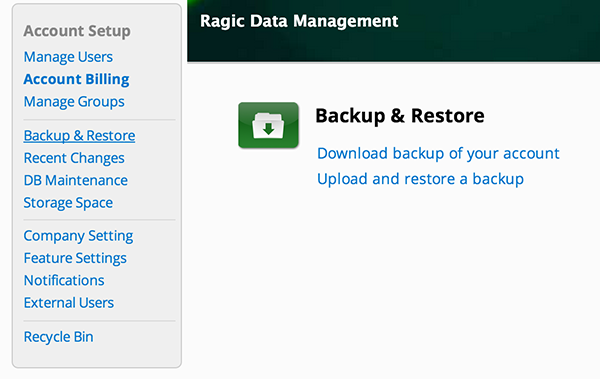Field: A normal field consists of two parts that are connected to each other: the field header, and the field value. This example sheet currently has 6 fields.

Record: A record is an instance of sheet data that a user fills out, which consists of all the values entered in fields. Records are shown with their full details in the Form Page, and are summarized as rows in the Listing Page.
This is a highlighted record in the Listing Page.
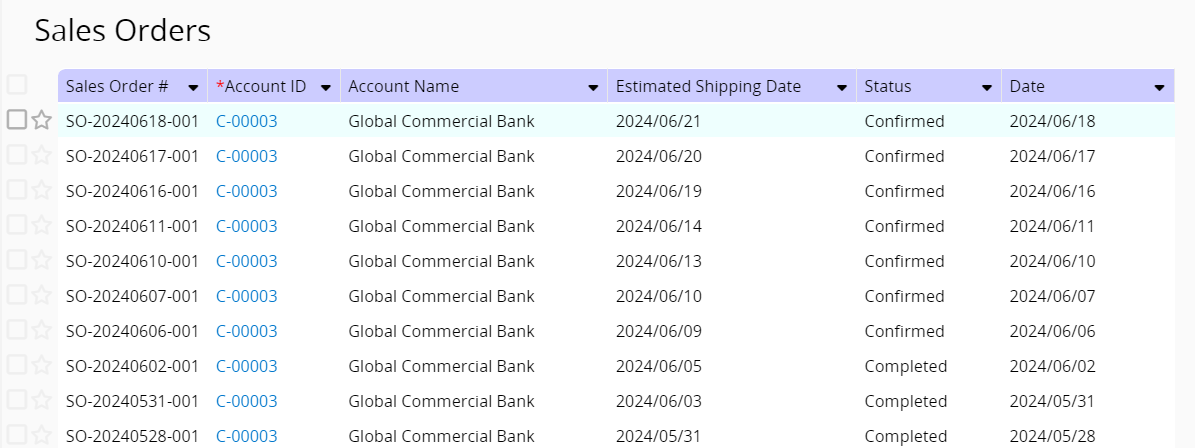
Clicking on a record in the Listing Page will take you to the Form Page of this record, which shows detailed information.
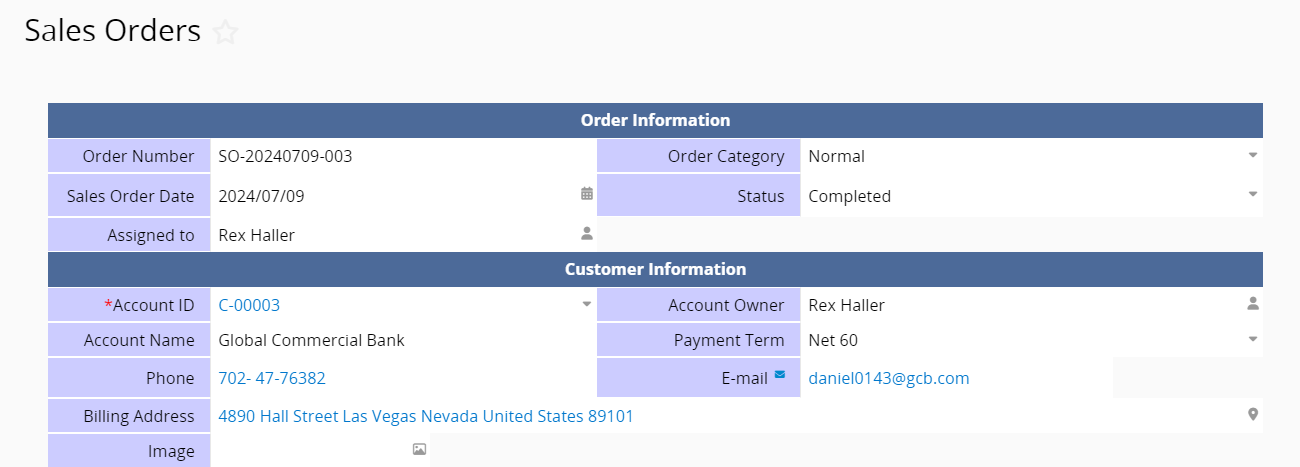
Form Page: A Form Page is the full detail of a single record as a page. This can contain as many fields as you want. Learn more about designing a sheet here.
This Form Page shows detailed information about a sales order:
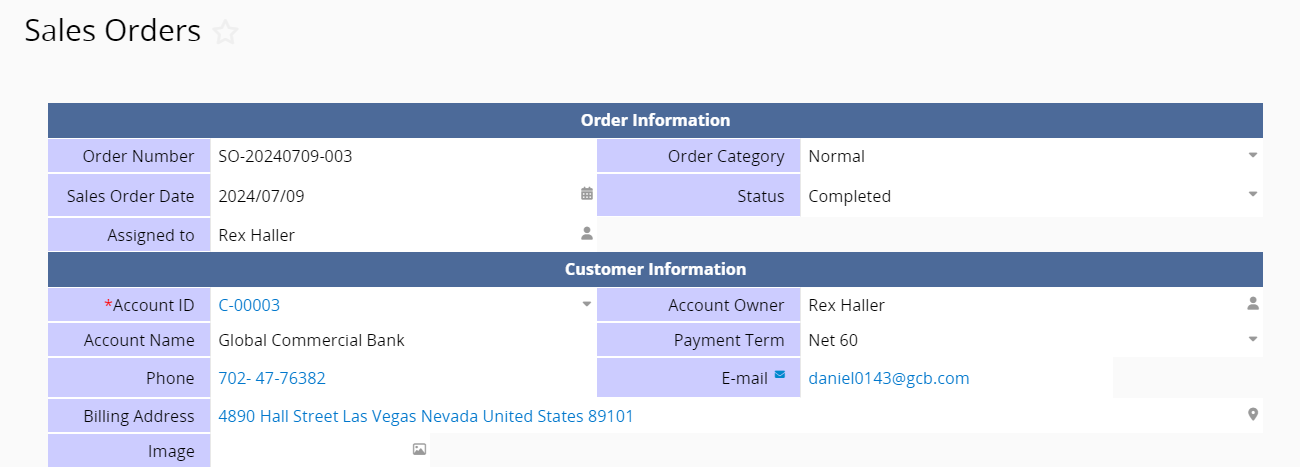
Listing Page: A Listing Page contains the summary of many records. This is automatically generated when you create your Form Page. In a Listing Page, the first row consists of field headers, which show columns of field values in their respective records.
This Listing Page shows us all the records in a sales order sheet.

Sheet: A sheet contains the entire information of all the records in a certain listing page, or all the form pages that show the details of one category. Sheets can be found under your tabs.
A list of your sheets can be viewed in your account homepage:

Subtable: A subtable is a table that you add in a form page, and is usually used to show detailed information in an record. Subtables consist of fields placed side by side. Learn how to create and use subtables in our documentation here.
This subtable shows the quoted line items in a sales order form:

Tabs: A tab is a collection of your sheets in Ragic. You can have an unlimited number of tabs. Tabs are used to organize your sheets in categories of your choice, and have no effect on linking.
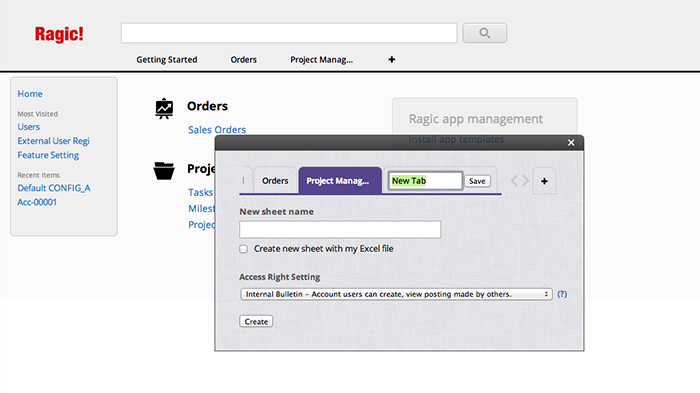
Design Mode: The design mode is where a form page or a listing page can be created or modified. The design mode can be accessed by clicking on the "Change Design" button on the upper-right hand corner, given that the user has the necessary access rights. Learn about the normal process of designing your Ragic sheet in our documentation here, and how to design great looking Ragic forms in our documentation here.
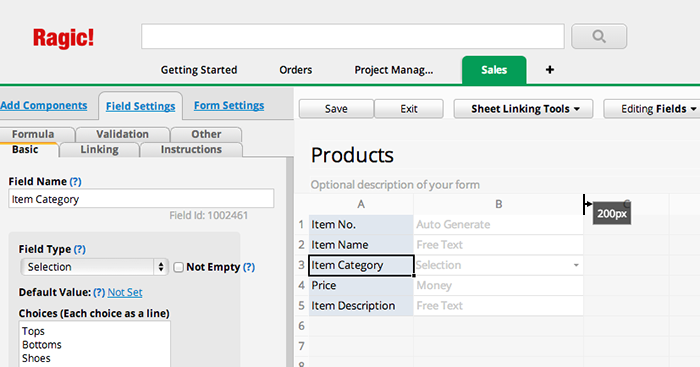
Description Field: A description field (also called a static text field) is a field without a field value, and is used for viewing purposes. Learn more about how to use description fields in our documentation here.
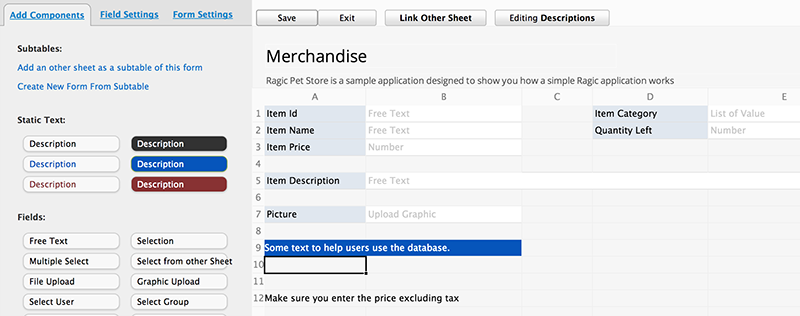
Field Header: The field header describes what a field will be used for. In a form page, the field header is the set name of a field. In a listing page, the field headers are the column headers, with the field values listed below in their respective records. In the design mode, the field headers are shown as light blue, where you can rename them. Formulas should refer to the location of field headers.
The field header of the selected field is "Item Category":
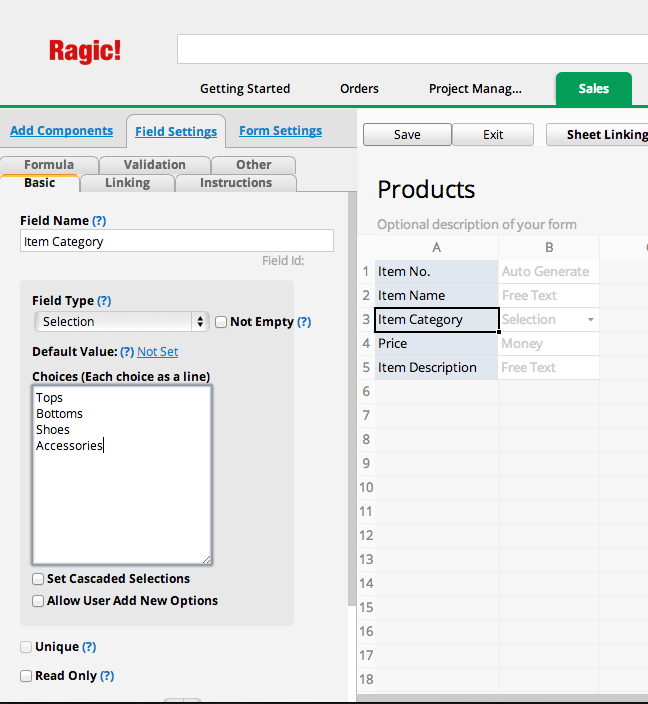
Field Value: The field value is the value entered to a field when creating or modifying an record. Ragic will format the entered field value according to the field type. In a listing page, the field values will be shown under the records they belong to in rows, and under the column order of the field headers that have been set for the listing page in the design mode. In a form page, the white cells when fields are created depict where the field values will be, with the field type written as the description.
The field value of the selected field would be one of the selection choices, "Tops", "Bottoms", "Shoes", or "Accessories":

Field Type: There are different field types in Ragic, since the field value formatting can vary. The field type is defaulted to Free Text, which allows the user to enter field values without restrictions, like most other spreadsheet applications. While this works in most cases, the application will generally work better if you specify the right field types. The field type can be set in the design mode. In the design mode, you can also view the field types of existing fields written in the white cells depicting where the field values will be. Learn more about different field types here.
The field type of this field is a "Selection":

Linking: Ragic supports several ways of one-to-many relationships to link your sheets, which can be found under the Sheet Linking Tools button in the design mode. Learn more about how to configure linking in our documentation here.
An example of linking - linking a sheet as a subtable with the Link & Load option:
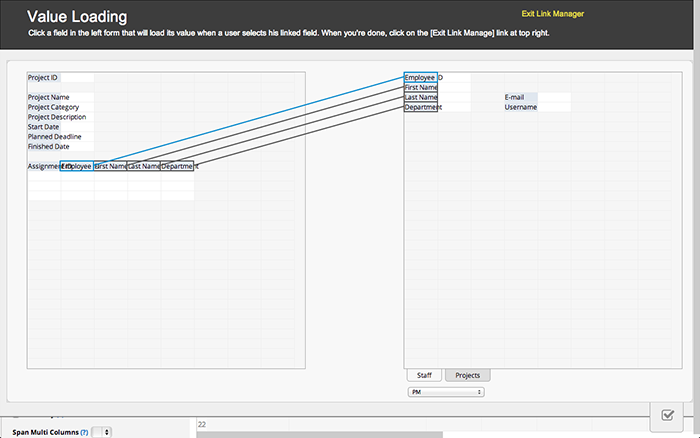
Formulas: You can add formulas in Ragic to make calculations in your form pages and display them on your listing pages. Formulas in Ragic work very similar to the formulas you use on spreadsheet software, but the major difference is, instead of assigning formulas to field values, you assign cell references to field headers. This makes calculations much easier, especially for subtables, for which you can write more complicated formulas with less effort. You can add formulas to fields in the design mode. View a list of formulas supported in Ragic here.
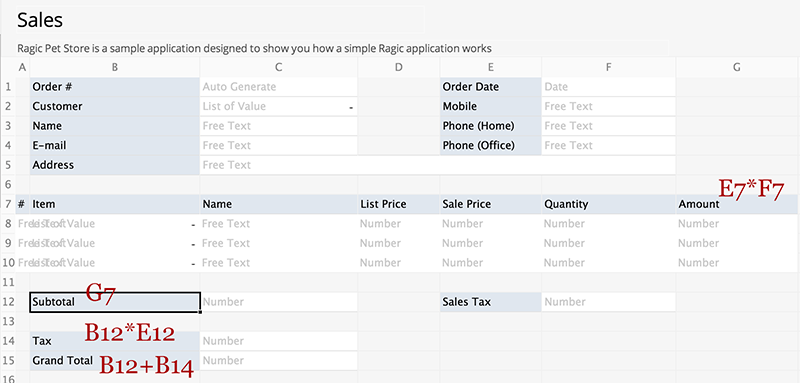
Account Homepage: Your account homepage is a page that displays all the tabs and sheets under your account, and can be accessed by clicking on the Ragic logo on the upper-left corner of your account.

Access Rights: Ragic has a variety of access rights that allows you to determine users and user groups that can see the data on your sheets. Learn more about access rights in our documentation here.
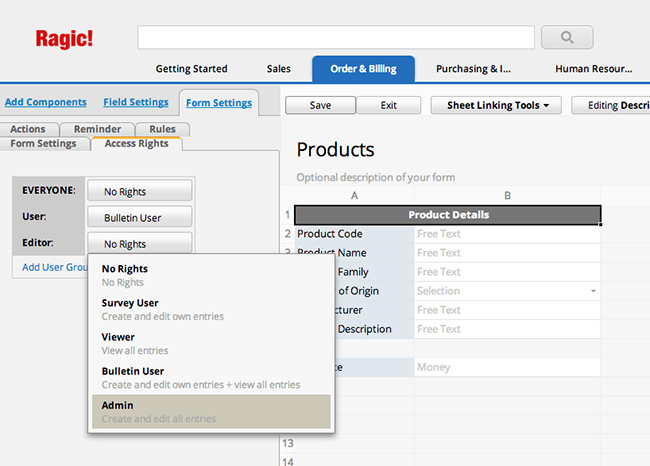
Account: An account is a Ragic database account created for an organization, it can contain many users, which are actually user e-mail and password combinations that a person can log in with. Ragic uses the number of users to determine the price of an account's subscription fee.
In some cases, a user can also be in multiple accounts when multiple companies are using Ragic, and the user would like to access both of these Ragic databases with the same set of user e-mail and password.
Users: A user is an e-mail address that can be used to log in to your Ragic account. Your account can have any number of users you need, and they will access the same set of database sheets in your account. Ragic charges by the number of internal users in your account, an internal user is generally a person inside your organization. External users are free, and they can only be people outside of your organization, like clients, vendors, partners and freelancers. You can add internal and external users to your Ragic account from your account setup. You can configure the access rights of these users by adding them to user groups. Learn more about adding users in our documentation here.
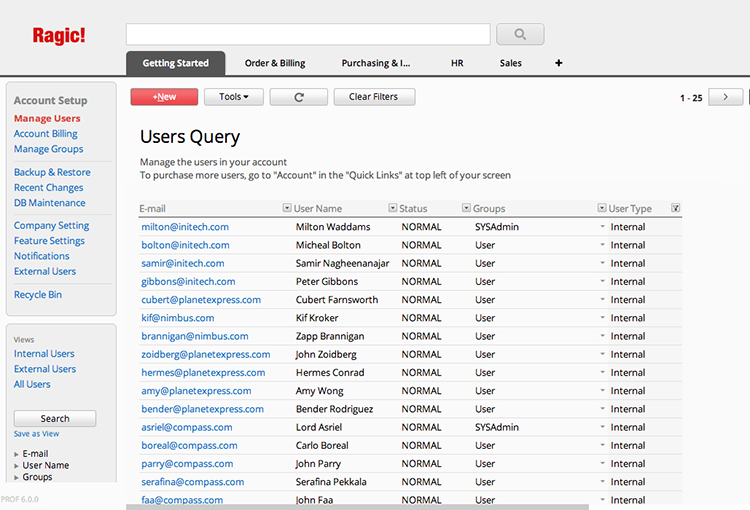
User Groups: User groups are groups of users in Ragic. As you add new users to your account, you can manage which sheets they can view or edit. The default user group SYSAdmin has the access rights to the design backend of your sheets.
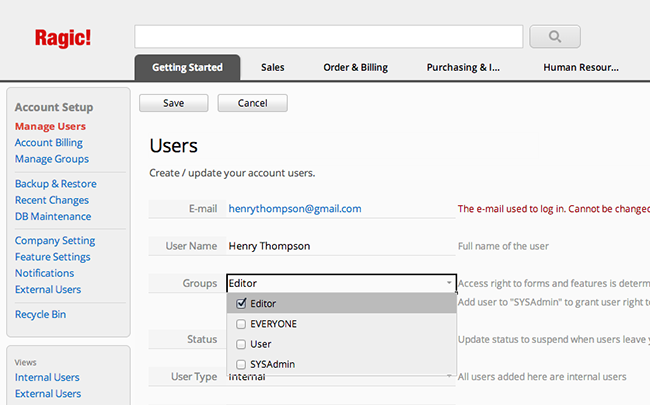
Account Setup: Your account setup can be found in the Start tab, where you can configure your users, user groups, billing information, account and company information, and other Ragic features. You can also download backups to your account, view recent changes, and access your recycle bin for accidental deletion of sheets, tabs, or records.
